Warrior against pseudoscience: Daniella Muallem Inspire article
Daniella Muallem tells Eleanor Hayes about challenging misleading ‘scientific’ claims.
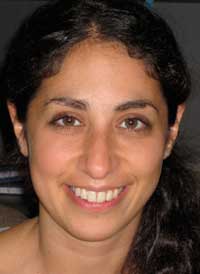
Image courtesy of Shirley
Shalev
How does a biophysicist get involved in the battle against pseudoscience? “I was like a lot of young scientists,” recalls Daniella Muallem. “I was passionate about my science, passionate about research, but I didn’t know how to use it to make a more immediate impact on society. I’d see misinformation about science or a product claim that seemed ridiculous, I’d complain to my colleagues and we’d all moan about it but we wouldn’t do anything about it.”
Until, that is, she joined Voice of Young Science (VOYS, pronounced ‘voice’)w1. Co-ordinated by the UK charity Sense About Sciencew2, VOYS is a network of early-career scientists who want to stand up for science in public, investigating product claims and correcting misinformation in the media.
“One of the things I’ve learned through working with VOYS is that even at an early stage in your career, you really are an expert in the scientific process, so you’re in a great position to confront bad science and pseudoscience in the public arena.”
Pseudoscience: a collection of beliefs or practices mistakenly regarded as being based on scientific method.

iStockphoto
Daniella entered the battle when she and other members of VOYS decided to challenge the claims about many ‘detox’ products. “The word sounds scientific but it’s used to describe a really wide range of products. For example, there are detox footpads that you’re supposed to stick on your feet at night and they will supposedly remove toxins while you sleep. Detox hair straighteners, detox face washes, detox body brushes – there is a whole range of products.”
The young scientists approached the companies producing these detox products, asking “What do you mean by detox?”, “Which toxins are you removing?” and “Do you have any evidence to support the claims that you’re making?”.
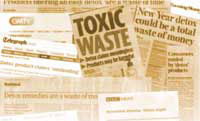
Science
To Daniella’s surprise, the companies were totally unprepared for these questions. “They had no materials prepared; if we asked to speak to their scientific departments, these departments didn’t exist; and in some cases the customer representatives even ended up agreeing with us: the products didn’t really do anything different from a non-detox product. Other people simply refused to answer us.”
Daniella and the other VOYS scientists drew their conclusions: “It was clear that detox has no scientific meaning and it’s just a pseudoscientific marketing slogan.” They released their report, including transcripts of the interviews with the companies, just after Christmas, “when everyone is obsessed with detox”. The media coverage was enormous, and the young scientists were asked to give many interviews.
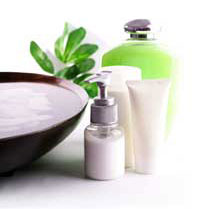
iStockphoto
But doesn’t everyone already know that these and similar scientific-sounding claims are rubbish? Daniella thinks not: “Our experience showed that people may not be sure, but they don’t know how to make the judgement.”
So some of the public benefited – but so too did Daniella. “The best thing about working with VOYS was being able to use my experience and knowledge for the general public. It also gave me the chance to really be part of a team, which is sometimes missing in research.”
Alongside her postdoctoral research into biophysics, Daniella continued her involvement with VOYS.
When they heard of a conference about using homeopathy to treat HIV, AIDS, malaria and other life-threatening illnesses in Africa, she and some other VOYS scientists discovered that several organisations were promoting homeopathy as the cheap, effective, side-effect-free alternative (not complement) to conventional medicine.
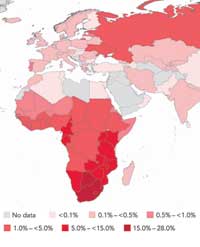
prevalence rate (%) per
country in 2009.
Click on image to enlarge
Image courtesy of UNAIDS;
data source: UNAIDS
They were particularly appalled by the stance of the World Health Organization (WHO): “Hidden away in all their information, they said ‘the downside of homeopathy is that it doesn’t really work’ but also ‘the advantage of homeopathy is that it’s really cheap’.”
With the help of Sense About Science, they involved medics who were working in Africa and experts in the fields of HIV and malaria, wrote a letter to the WHO and simultaneously released it to the media. “The response from the WHO wasn’t quite as quick as we’d have liked but after weeks of pushing, we finally got a response: the WHO made a clear statement that homeopathy is not appropriate for treating life-threatening illnesses in Africa. We got huge global coverage for this.”
Inspired by these experiences, Daniella became more involved in science communication. “I loved the creative aspects of research, the feeling of excitement when my ideas turned out to be good ones and being absorbed in my own project, but the nature of academic research means you have to focus on a small scientific area. It can also sometimes feel quite disconnected from the everyday world. My experience with VOYS made me realise that although I loved research, I wanted to be more connected with how science affects everyday life and everyday people. I also realised how much I enjoyed interacting with a range of different people.”

HIV particles. The 3D
computer reconstruction
shows the immature Gag
lattice of HIV that matures
to form the protein shell
of the infectious virus
Image courtesy of John Briggs
/ EMBL
In 2010, she took the plunge, changing career, country and even continent – and now lives in Israel, working as a research analyst in the clean technology sector. This involves researching and reporting on companies that develop technologies to improve the environment, such as renewable energies and energy efficiency.
It may sound a long way from the lab, but Daniella would disagree. “I am using all the skills and knowledge I developed in my science career, such as research methods, analysing information, writing and presenting my findings. I am also drawing on my biology and physics background to understand the technologies and science in new areas of biotech and cleantech. These jobs are bringing me closer to the interface of where science meets technology and the implications of science for the benefit of human health and the environment.”
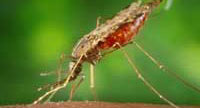
mosquito, a vector of malaria
Image courtesy of James
Gathany / Public Health Image
Library
Despite the geographical distance, Daniella remains in contact with VOYS. The network encourages young professional scientists – PhD students and postdocs – to challenge dubious-sounding scientific claims but, as Daniella says, “You don’t have to be a scientist to ask for explanations. By asking the right questions we can all get involved in the battle against pseudoscience. If you see something that seems wrong, ask!”
Daniella’s advice to school students would be to work as a group, as, in her experience, it’s more motivating that way. And even if you don’t end up on TV, there’s still plenty you can do. “If you can get your school interested in challenging pseudoscience and understanding the importance of evidence, that’s already a big step. You could suggest holding a class discussion, or get outside speakers to come to your school and try writing about your experiences for the school magazine or the local newspaper.”
We at Science in School look forward to hearing what you and your students have done.
So what does Daniella plan to do next? “The simple answer is I don’t know. Having a science background keeps a lot of doors open, and there are so many different directions possible, it is sometimes hard to make a choice.”
Web References
- w1 – To find out more about the Voice of Young Science (VOYS), see: www.senseaboutscience.org.uk/voys
- To learn more about the ‘detox dossier’, the homeopathy investigations and the media coverage they received, visit the Sense About Science websitew2 or use the direct link: http://tinyurl.com/3hlvmah
- These and other investigations by VOYS are compiled in There Goes the Science Bit: A Guide to Standing up for Science, which can be downloaded from the Sense About Science websitew2 or via the direct link: http://tinyurl.com/3vryo3x
- w2 – Sense About Science is a charity that works with scientists and civic groups to respond to the misrepresentation of science and scientific evidence on issues that matter to society. To find out more or get involved, visit: www.senseaboutscience.org.uk
Review
This article addresses the importance of alerting the public to the fact that not everything that sounds scientific is actually science, making scientific literacy – and science education – vital.
Reading the article would be an excellent starting point for an interdisciplinary project with secondary-school students in grades 10-12 (ages 15-18). For example, biology and chemistry teachers could work together with their students to investigate ‘scientific’ slogans that are used to advertise products (e.g. in the cosmetic and food industry).
The article could also be used to start a discussion. For example:
This should encourage students to realise that we need a certain level of knowledge to detect incorrect claims. Thus even people who do not enter a scientific career should (have the opportunity to) be scientifically literate.
- Daniella Muallem says “You don’t have to be a scientist to ask for explanations. By asking the right questions we can all get involved in the battle against pseudoscience. If you see something that seems wrong, ask!” Do you agree? Justify your position.
- Daniella Muallem states that “science affects everyday life and everyday people” and can benefit “human health and the environment”. List and explain some examples to corroborate this statement; try to choose examples from different scientific areas.
Betina da Silva Lopes, Portugal
